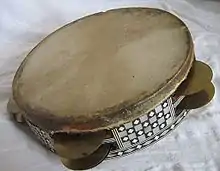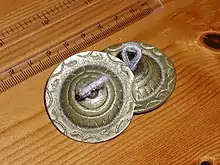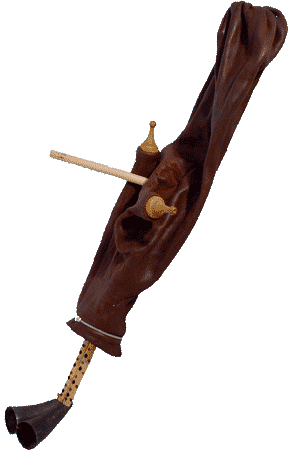Arabic musical instruments can be broadly classified into three categories: string instruments (chordophones), wind instruments (aerophones), and percussion instruments. They evolved from ancient civilizations in the region.

Drawing of Qanun player in 1859, Jerusalem

Traditional flute player from Iraqi folk troupe

Mizmar ini Display

the Riqq is one of the instruments used only in the Egyptian and Arabic music, and in most of its varieties

Sagat in Khan El-Khalili, Cairo
Chordophones
Plucked lutes
Zithers
Bowed lutes
- Jawzah
- Ghuanbri
- Kamancheh
- Rababa
- Pontic lyra
Lyres
- Simsimiyya
- Kissar
- Tanbūra
- Jewish Lyre
Aerophones
Flutes
Reed instruments
Trumpets
- Nafir
- balzak
Percussion instruments
Drums and frame drums

- Riq
- Daf
- Bendir
- Dumbaki
- Duhulah
- Drinjah
- Bass Drinjah
- Khishbah
- Kasurah
- Tabl Tsjikangha
- Tabl Masanduw
- Tabl Bib
- Taarija
- Tar
- Tar Barashim (Shake Tar)
- Tar Mirjaf (Low Tar)
- Tar Saghul (High Tar)
- Katim
- Mirwas
- Zir (Naqarah)
- Qas'ah
- Tbilat
- Tabl Bahri (Khamari & Laauwb)
- Tabl Hajir (Khamari & Laauwb)
- Tabl Nasayfi (Khamari & Laauwb)
- Al Ras
- Mazhar
Other percussion
This article is issued from Wikipedia. The text is licensed under Creative Commons - Attribution - Sharealike. Additional terms may apply for the media files.
